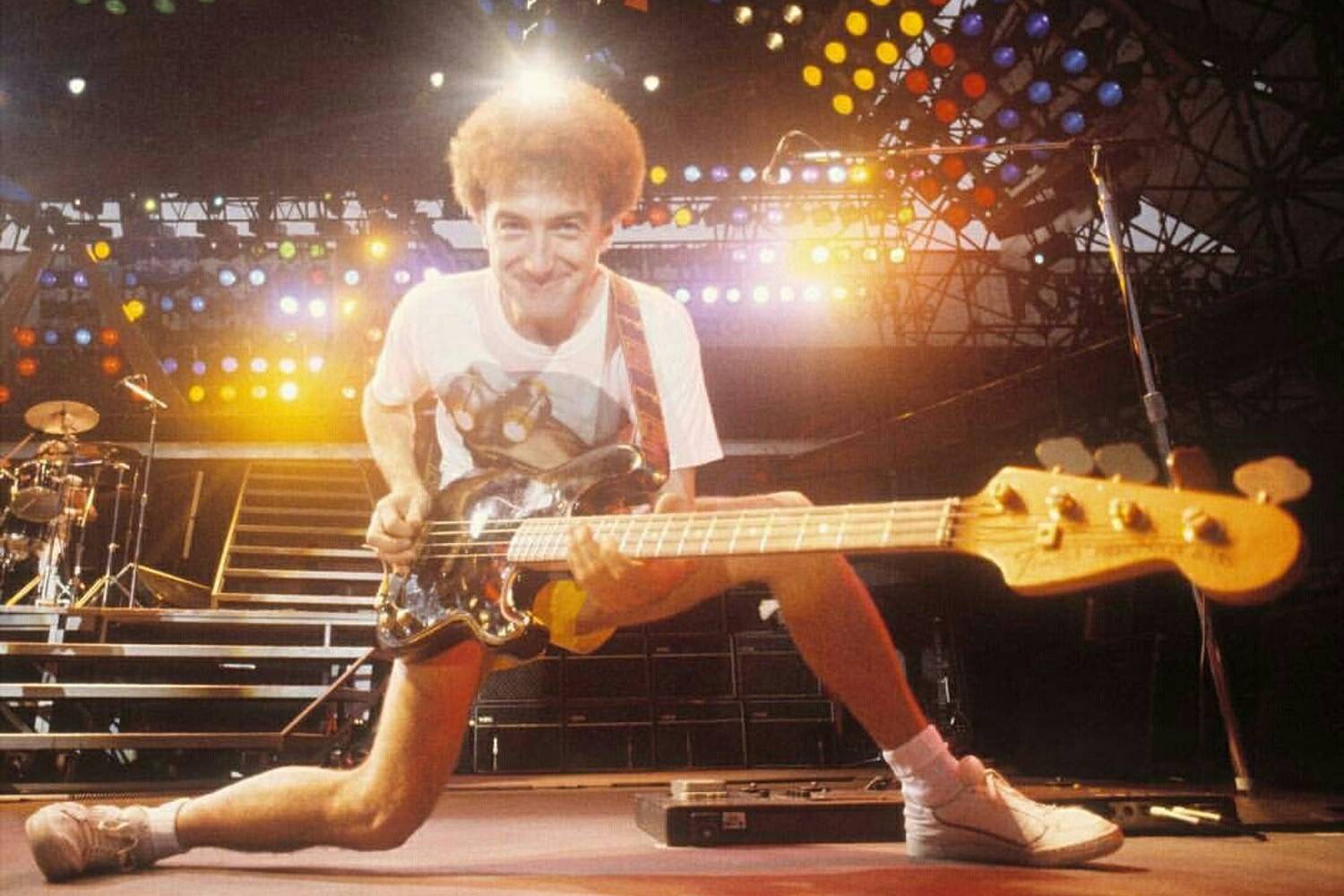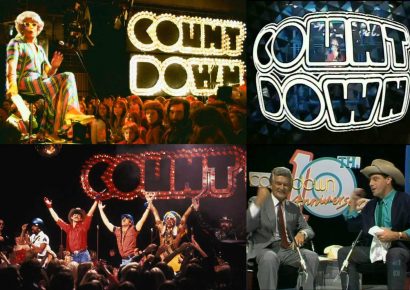Super simple, yet super effective
There’s a fine art to creating a good bassline. At a fundamental level, it’s the role of the bassist to lock in to a groove and create a steady pulse for every other instrument to build upon, and sometimes, you might even be lucky enough to sneak a fill or two in for good measure.
Of course, like any other musician in an ensemble, most bassists possess quite a lot of chops, and from time to time, they’ll want to show those chops off with an intricate bassline full of double stops or spiky scale runs. However, the hallmark of a truly great bassist isn’t necessarily about what notes they play, but rather, what notes they choose not to play.
Read all the latest features, columns and more here.
Sometimes, all you need is a carefully curated selection of notes and just a splash of groove to take what seems like a novice bassline and turn it into rhythmic gold, and it’s this less-is-more ethos that’s been crucial in the creation of some of the greatest bass riffs in musical history.
Today, we’re turning our eyes towards some of the best examples of less-is-more bass playing in the rock canon, analysing 13 of the most iconic, and easy basslines to consist of fewer than five notes and pinpointing exactly what it is about them that makes them so simple yet effective.
‘Another One Bites The Dust’ – Queen
It’s hard to get much of a look in when you’re playing second fiddle to superstars like Freddie Mercury and Brian May, but there’s no denying that John Deacon is one of the most underrated elements in the make-up of classic era Queen.
On top of lending his songwriting talents to hits like ‘You’re My Best Friend’ and ‘I Want To Break Free’, Deacon was also the mastermind behind one of the band’s biggest crossover hits ’Another One Bites The Dust’, a Chic-inspired slice of funk-rock genius that makes use of a scant three notes for its iconic, and easy bassline.
‘Psycho Killer’ – Talking Heads
Another track to follow the three note formula, Talking Heads’ 1977 breakthrough ‘Psycho Killer’ supposedly started life as a Randy Newman-esque ballad before drummer Chris Frantz and bassist Tina Weymouth added their now-seminal stop-start groove to the song.
For a song to retain such a persistent, driving groove without ever feeling monotonous is rare – for Weymouth, however, it’s nothing more than a walk in the park. Has there ever been a bass player with such a deft and minimal touch? We’d argue not.
‘Sabotage’ – Beastie Boys
Considering the band’s early roots in the New York hardcore scene, it came to no surprise when Beastie Boys began to dip further and further into live instrumentation in the ‘90s as part of their endless mission to expand their sonic horizons.
Nevertheless, when the band released their punk-tinged single ‘Sabotage’ in 1994, the impact was near immediate: more than 25 years on today, it’s deemed as one of the group’s best songs, with MCA’s fuzz-drenched bass part providing a two note foundation for his bandmates to let rip over. Theoretically, nothing about this bassline should work, but that’s just the sheer beauty of it.
‘Reptilia’ – The Strokes
Perhaps one of the most recognisable basslines to arise from the golden age of indie rock, ‘Reptilia’ sees Strokes bassist Nikolai Fraiture kick off the band’s Room On Fire standout by hammering down on a single repeating note as he waits for the dual guitar attack of Albert Hammond Jr. and Nick Valensi to accompany him.
Sure, it’s nowhere near as melodic as ‘Is This It’ or as groovy as ‘Machu Picchu’, but you’ve got to commend Fraiture’s robotic right wrist for creating such an irresistibly simple groove on this one.
‘Come Together’ – The Beatles
Despite being written by John Lennon, ‘Come Together’ is almost universally associated with Paul McCartney by most music fans, and for good reason – it’s without a doubt one of his most iconic bass performances ever.
On this iconic Abbey Road cut, Paul keeps things simple and opts for a melodic bass figure centered around a D Minor chord, letting the sly groove of the bassline and the thumping low-end tone of his Hofner 500/1 do the talking.
‘Under Pressure’ – Queen & David Bowie
The only bassist on this list with repeat entries, the simplistic touch of Queen’s John Deacon really shines true on the band’s decade-defining duet with David Bowie ‘Under Pressure’.
While there’s been some dispute as to who actually created the seminal two note bassline the song’s based around – Deacon claimed it was Bowie who wrote the line, whereas Bowie, Brian May and Roger Taylor credit Deacon with the riff – it’s quite possible that there’s never been a more effective use of two open strings than on this tune.
‘Give It Away’ – Red Hot Chili Peppers
Flea is best known in the bass world for his incredibly busy and energetic approach to funk, so when his playing sits in the backseat of a Chili Peppers tune, you’re guaranteed to know about it almost immediately.
On the band’s 1991 opus Blood Sugar Sex Magik, the Australian-born bassist abandoned much of the frenetic slap-and-pop that defined his style in favour of deceptively simple and syncopated lines, with the best example being heard on the album’s wildly popular lead single ‘Give It Away’. Stylistically, this one’s not too dissimilar from McCartney’s bassline on ‘Come Together’, with Flea making use of a monstrous slide and an octave-based figure for the song’s five note hook.
‘My Sharona’ – The Knack
A dad rock classic through and through, ‘My Sharona’ might just be one of the most memorable and easy basslines to be based around a repeated octave pattern, with bassist Prescott Niles barely moving beyond the fifth fret of his bass guitar to create the distinctive line.
It’s amazing to think that this was The Knack’s debut single – even if you can’t think of anything else these guys ever did, I can guarantee that you’ll never forget about this track.
‘The National Anthem’ – Radiohead
This Kid A free-jazz freakout tends to be regarded by many music enthusiasts as being Radiohead’s most distinguished bassline, yet ironically, it’s not even Colin Greenwood who performs on the track.
Instead, the song’s hypnotic riff was actually written and recorded by frontman Thom Yorke, who originally came up with the descending four note bass figure when he was sixteen years old – poor old Colin just never gets a look in with this band, does he?
‘Walk On The Wild Side’ – Lou Reed
There’s few songs on earth that are as instantly recognisable as ‘Walk On The Wild Side’ is, and there’s no doubting as to why this is the case – it’s that damn bassline. However, what you might not know is that you’re actually hearing two seperate bass parts on this track, with Lou Reed bassist Herbie Flowers overdubbing the deep upright bass with a sliding motif in the opposite direction on his fretless Fender Jazz, helping to create that subtle octave effect that makes the song sound so unique.
Despite being the brains behind the now-seminal bassline, Flowers was supposedly paid a flat fee of £17 for his role in the studio session that birthed ‘Walk On The Wild Side’ – imagine how bitter you’d feel about saying yes to that session in hindsight today.
‘Age Of Consent’ – New Order
Peter Hook is the absolute master of simple-yet-effective basslines, with his playing in Joy Division and New Order giving birth to an innumerable amount of iconic low-end lines.
However, if there’s any defining moment to pinpoint from his career, it’s surely his playing on New Order’s new-wave gem ‘Age Of Consent’, which sees the lanky Mancunian make use of four notes, a droning D string and a whole lot of chorus, strumming away at his bass with reckless abandon to turn in one of the most colourful and not so easy basslines of the ‘80s.
‘Town Called Malice’ – The Jam
Ask any survivor of the new wave era, and they’ll tell you that the bass playing on The Jam’s UK number one single ‘Town Called Malice’ is the absolute pinnacle of sheer simplicity done right.
Taking a page out of the James Jamerson playbook, bassist Bruce Foxton opts for an understated soul groove to fuel the jaunty track, anchoring the track with a repeating three-note bassline that’ll always find a way to worm itself into your head at the most inappropriate of moments.
‘Bullet In The Head’ – Rage Against The Machine
There’s no way you can get away with playing a complex bassline in a band where Tom Morello is constantly making his guitar sound like a broken vacuum cleaner, and for that reason, Rage Against The Machine’s Timmy Commerford is an undisputed king of making a little go a long way.
On this incendiary cut from their 1991 debut, Commerford keeps things cool and sticks with an E interval and a funky two-note chord to inject a bit of offbeat flair into the track.
This article was originally published October 20, 2020.
Head here for more on effecting your easy basslines. Never miss a story – sign up to our newsletter for the latest news, reviews, features and giveaways.

